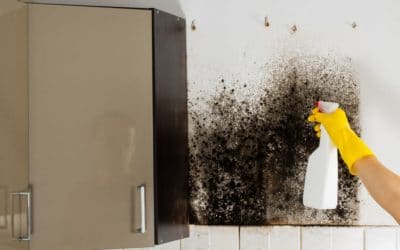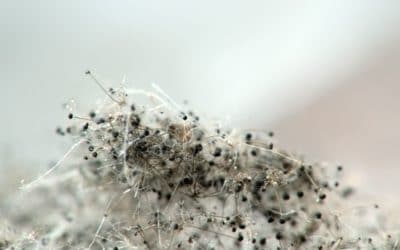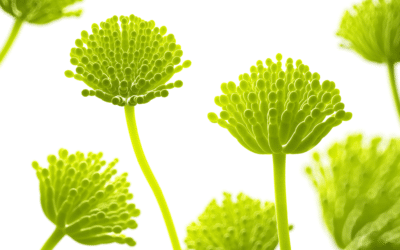The Top Five Types of Mold in Homes and What to Do About Them
Mold is a common problem in homes, and it can cause a variety of health problems. In this blog post, we will discuss the five types of mold in homes, and we will give you some tips on how to get rid of them.
What is Mold and Why Is It a Problem
Mold is a type of fungus that can grow on practically any surface, given the right conditions. It thrives in warm, dark, and moist environments, and it can release spores into the air. These spores can cause allergic reactions in some people, including sneezing, coughing, and watery eyes. In addition, mold has been linked to some serious respiratory problems, such as asthma. Because of these health risks, it’s important to take steps to prevent mold growth in your home. Some simple measures include using exhaust fans in moisture-prone areas like the bathroom and kitchen, fixing leaky plumbing fixtures, and keeping the humidity levels in your home low. If you do find mold growing in your home, it’s important to clean it up quickly and properly to prevent it from spreading.
The Five Most Common Types of Mold in Homes
Though often hidden from view, mold is a common problem in homes. There are many different types of mold, and each one thrives in different conditions. Here are five of the most common types of mold that can be found in homes: Cladosporium: This type of mold is often black or green in color, and it can commonly be found on walls and surfaces that are damp. Cladosporium is generally not harmful to humans, but it can cause respiratory problems in people with asthma or allergies.  Stachybotrys chartarum: Also known as “black mold,” this type of mold can be dangerous to humans. It often grows on surfaces that are damp and decaying, such as drywall or insulation. Black mold can cause a range of health problems, including respiratory infections, headaches, and fatigue.
Stachybotrys chartarum: Also known as “black mold,” this type of mold can be dangerous to humans. It often grows on surfaces that are damp and decaying, such as drywall or insulation. Black mold can cause a range of health problems, including respiratory infections, headaches, and fatigue.  Aspergillus: This type of mold is often found in humidifiers, air conditioners, and other damp areas. It can cause respiratory problems in people with asthma or allergies.
Aspergillus: This type of mold is often found in humidifiers, air conditioners, and other damp areas. It can cause respiratory problems in people with asthma or allergies.  Penicillium: This type of mold is often blue or green in color, and it is commonly found on food and surfaces that are damp. Penicillium can cause respiratory problems in people with asthma or allergies. Fusarium: This type of mold is often pink, red, or orange in color, and it is commonly found in carpeting or on fabrics that are damp. Fusarium can cause skin infections and respiratory problems in people with weakened immune systems.
Penicillium: This type of mold is often blue or green in color, and it is commonly found on food and surfaces that are damp. Penicillium can cause respiratory problems in people with asthma or allergies. Fusarium: This type of mold is often pink, red, or orange in color, and it is commonly found in carpeting or on fabrics that are damp. Fusarium can cause skin infections and respiratory problems in people with weakened immune systems.
How to Get Rid of Mold
If you suspect that you have mold in your home, it is important to take action immediately. The first step is to identify the source of the moisture. Once you have done that, you can work to eliminate the moisture by repairing leaks, fixing drainage problems, or increasing ventilation. Once the moisture problem has been addressed, you can clean the affected areas with a solution of bleach and water. In some cases, you may also need to remove and replace moldy materials like drywall or carpeting. By taking these steps, you can get rid of mold and help keep your family safe and healthy.
Prevention Tips
While mold is a common and necessary part of the ecosystem, it can become a problem when it starts to grow indoors. Mold thrives in humid, dark environments, and can quickly spread through a building if left unchecked. There are a few simple steps that you can take to prevent mold growth in your home or office.
- Make sure to keep the humidity level low.
- Use a dehumidifier in rooms that are prone to dampness, such as the basement or bathroom. In addition, monitor for leaks and repair them promptly. Water is the main source of mold, so eliminating moisture will go a long way towards preventing its growth.
- Make sure to clean areas that are susceptible to mold, such as the shower or refrigerator, on a regular basis.
By following these tips, you can help to keep mold at bay. Mold comes in many different shapes and sizes, but all of it should be removed as soon as possible for the safety of your family. If you’re unsure of whether or not you have a mold problem, contact us today for a free consultation. Our team will help you identify the type of mold present in your home and take steps to remove it quickly and safely.




